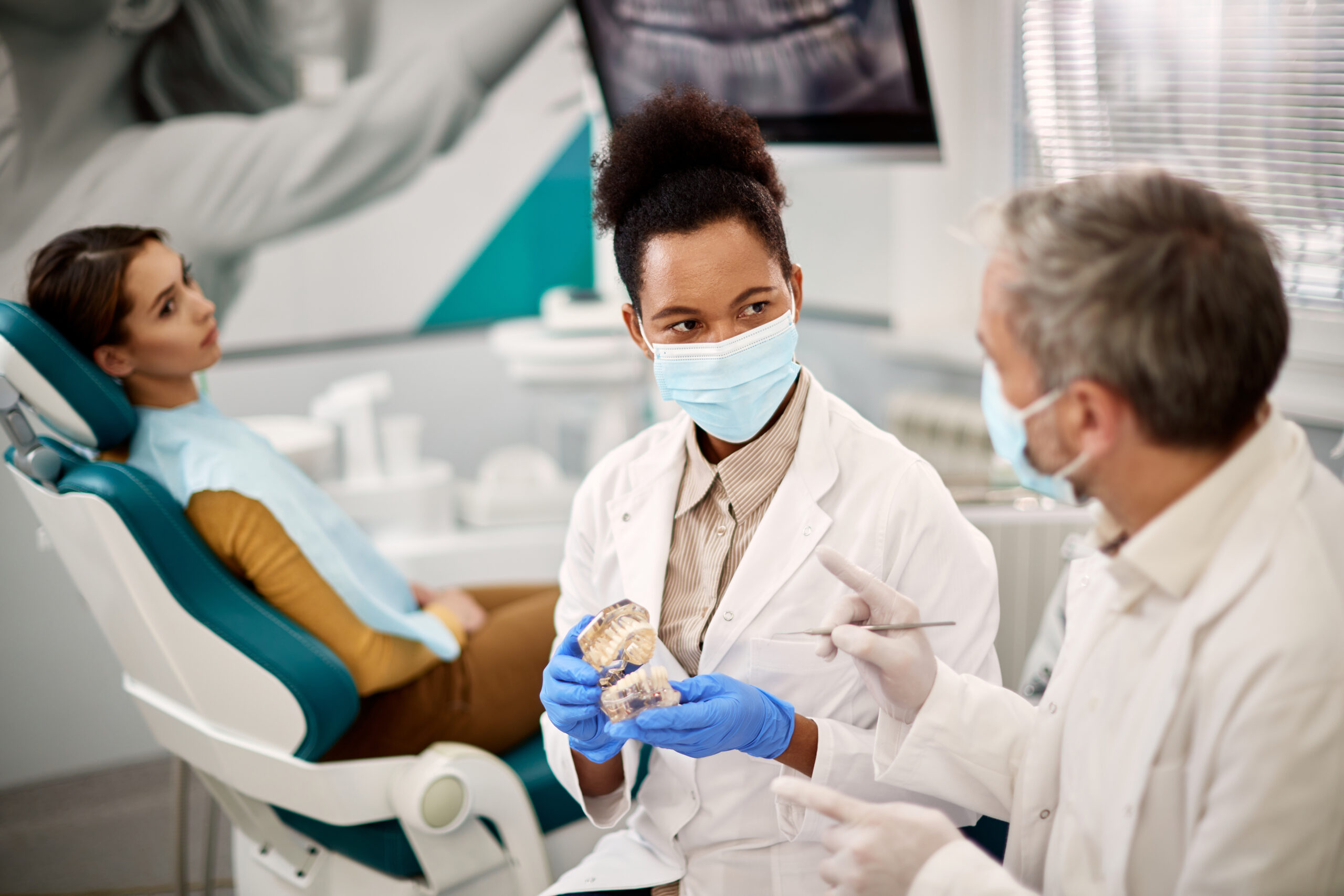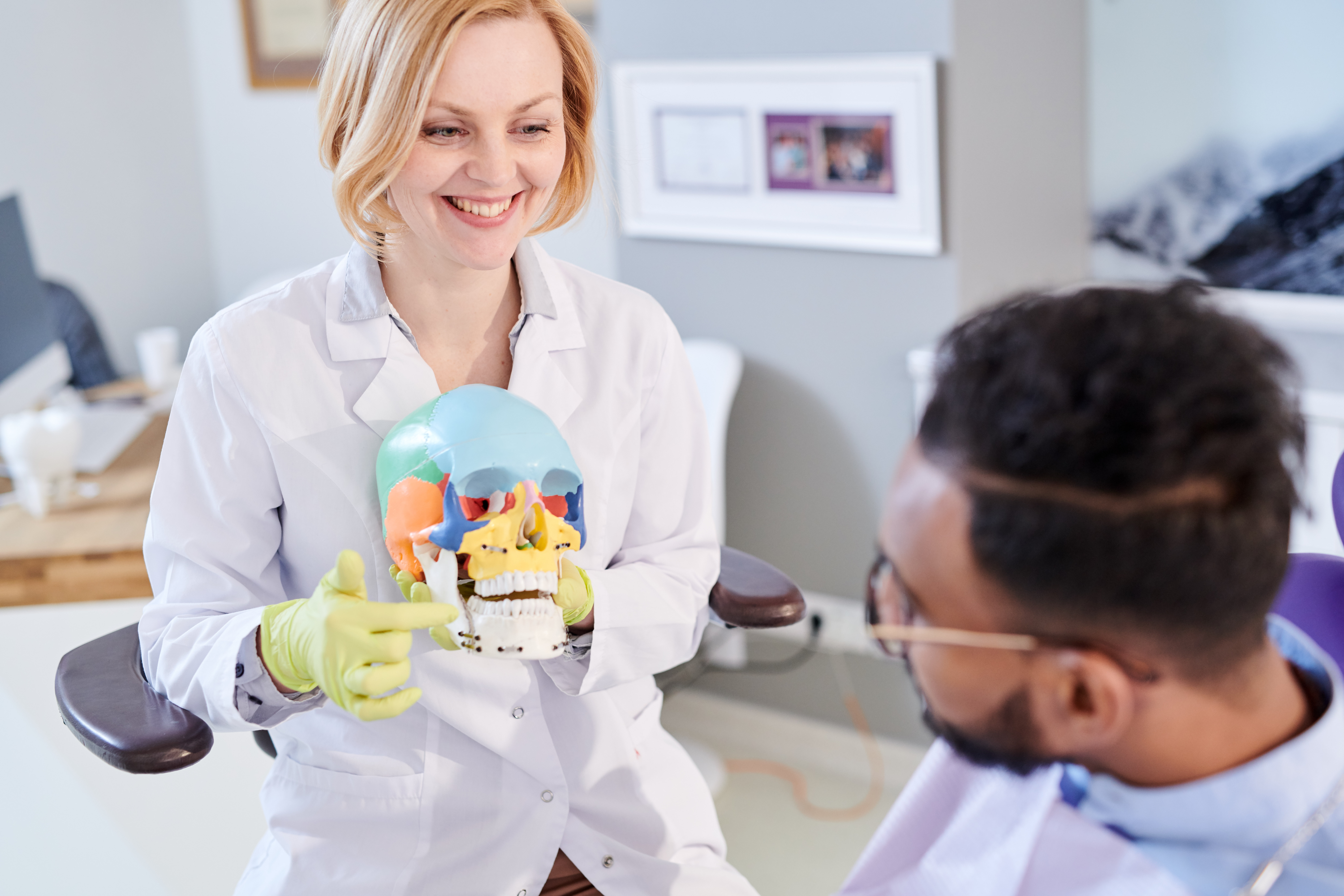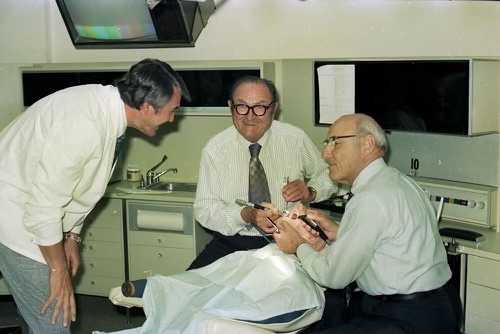A History of the Pankey-Mann-Schuyler Method
By Bill Davis
During his three-month summer course at Northwestern University in 1931, L.D. Pankey was introduced to the principles of occlusion. This was a new term for him and many of his dentist colleagues. The students were assigned an article by Clyde Schuyler and published in the 1926 New York Dental Journal. Dr. Schuyler was a promenade prosthodontist from New York City. The article talked about the basic principles of occlusal function, its dysfunction (malocclusion), and the basic requirements for restoring occlusal harmony.
1931: Dr. Clyde Schuyler Prompts Considerable Thinking
At first, L.D. did not understand what Dr. Schuyler had written. He was not alone because most of his classmates had the same problem. L.D. eventually made personal contact with Dr. Schuyler and, after a series of conversations, understood Schuyler’s work.
Schuyler told L.D., “Those in the field of dental reconstruction must have and cultivate the creative mind of the artist and the accuracy of the engineer.”
That was easy for Schuyler to say, but he did not explain to L.D. how to approach and visualize a dental reconstruction. Before L.D. met Dr. Schuyler, he had restored posterior occlusion using a Munson articulator and a chew-in technique. The Schuyler article pointed out the importance of anterior teeth guidance. This made L.D. start thinking about approaching occlusion in a more logical step-by-step manner.
1947: Dr. Arvin Mann Looks Up Dr. L.D. Pankey
In 1947, Arvin W. Mann moved to Ft. Lauderdale from Birmingham, Alabama. Dr. Mann had graduated from Western Reserve and moved to Alabama to do nutritional research at the University of Alabama before he moved to Florida. L.D. also had an interest in nutrition. His first published article in the Florida State Dental Journal was related to the connection between carbohydrates and dental decay.
While in Alabama, Arvin became interested in occlusal rehabilitation and the relationship between periodontal disease and restorative dentistry. A periodontal faculty member told Arvin, “When you get to Florida and want to do a restorative work where you won’t have to do all this grinding to correct occlusal restorations, look up Dr. L. D. Pankey in Coral Gables.”
As soon as Arvin got to Florida, he went to Coral Gables to meet L.D. They became fast friends because they realized they had the same goal of helping their patients keep their teeth for their lifetime. Over the next ten years, they worked together to develop a predictable diagnostic and treatment method for restoring patients’ teeth to health, comfort, function, and esthetics that would fit into the Philosophy of doing their best to help patients keep their teeth.
1947: Drs. Mann and Pankey Begin Collaborating on Cases
Arvin began bringing a set of mounted diagnostic casts and an intraoral series of radiographs to L.D.’s office. Arvin and L.D. would review the case together and develop an optimum treatment plan. L.D. would then present the case to Arvin using Arvin as the patient. This was a way to demonstrate to Arvin how to use the Philosophy, get to know the patient, explain what needed to be done, and educate patients to accept the treatment plan.
Arvin would practice the presentation on L.D. He would then return to his office and explain the treatment plan to his patient. When the dentistry was finished, Arvin would have another appointment to “resell” the case to the patient and make them a missionary for his practice. Within a short time, Arvin had a busy and successful practice. Arvin eventually helped four young dentists from outside his office like L.D. had helped him.
Mann and Pankey Replace the Munson Articulator with the P-M Articulator
They used L.D.’s Munson articulators when they started working together on their new restorative method. But soon, they found Munson articulators had limitations for their 3-dimensional approach, including a functionally generated path. Along with an engineer from the Ney Gold company, they designed their own — the P-M instrument and face-bow.
Arvin became excited about their restorative technique and wanted to share this information with the profession at a Chicago Mid-Winter Dental Meeting. L.D. felt that it would be best to work with a small select group of dentists interested in occlusion and comprehensive restorative dentistry. By now, L.D. had been teaching the Philosophy for a few years.
L.D. and Arvin selected eleven dentists from various geographical locations around the country who had taken the Philosophy course at least three times and were already using a conventional method to do restorative dentistry. They asked them to try the new P-M technique and articulator for a year. At the end of the year, the group got together in Dallas. The reports from the eleven dentists at the meeting were positive and gratifying. L.D. and Arvin then started the Occlusal Rehabilitation Seminars to teach other dentists the P-M technique and how to use their articulator and face bow.
1959: The P-M Method Is Presented to the AARD
In 1959, they presented the P-M therapeutic method to the American Academy of Restorative Dentistry at the Chicago Mid-Winter. They were then asked to write up two articles describing their new process showing the use of the P-M articulator for publication in the 1960 Journal of Prosthodontic Dentistry.
1960: The Occlusal Rehabilitation Seminars Begin
Arvin and L.D. wrote the Pankey-Mann Manual for the Occlusal Rehabilitation Seminars and started teaching the restorative technique to other interested dentists. The seminar schedule was coordinated by L.D.’s long-time secretary, Rose Quick.
One of the most significant difficulties in teaching the P-M technique was the inability of dentists to understand occlusion. At that time, no dental school in the United States taught occlusion. L.D. and Arvin realized it was essential to have Dr. Clyde Schuyler present his work on occlusion at their seminars. Also, they did not want Clyde to go to his grave without the profession appreciating his contribution to dentistry.
L.D. asked Clyde if he would help them teach occlusion. Clyde was reluctant because he anticipated much opposition to this new method and articulator. Also, he didn’t want to upset his friends and colleagues who had authored books or conducted clinics with him about occlusion.
Eventually, Clyde agreed, and from that point forward, the P-M technique became the Pankey-Mann-Schuyler Technique for Oral Rehabilitation.











